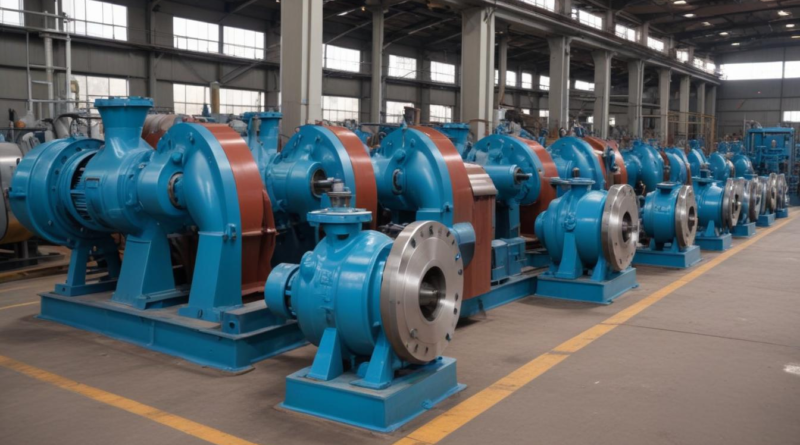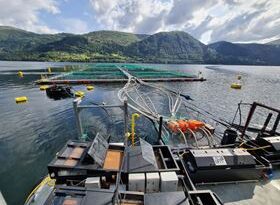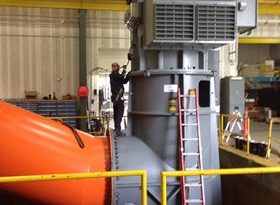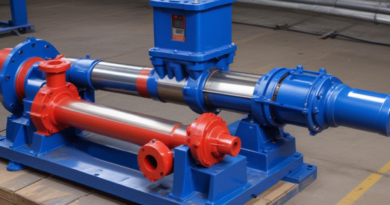pumps used in the paper manufacturing
In the paper manufacturing process, various types of paper manufacturing pumps are employed to handle different applications, ensuring efficient and reliable operation. The selection of a pump type depends on factors such as the required flow rate, pressure, viscosity of the fluids, and the specific stage of the manufacturing process. The primary types of pumps used include:
- Centrifugal Pumps: These are the most commonly used pumps in paper manufacturing due to their versatility and ability to handle large volumes of water and process chemicals. They operate by converting rotational kinetic energy to hydrodynamic energy, suitable for water circulation, pulp transportation, and chemical dosing.
- Positive Displacement Pumps: Including gear, diaphragm, and peristaltic pumps, these are used when precise flow control is required. They are ideal for dosing additives, such as sizing agents or retention aids, where accurate metering is critical.
- Screw Pumps: These pumps are preferred in situations where a steady, continuous flow is needed with minimal pulsation. They are often used for transporting thickened stock or high-viscosity liquids in the paper machine operations.
- Turbine Pumps: Suitable for higher pressure applications, turbine pumps are employed in processes that require overcoming significant head losses, such as in certain dewatering stages.
- Diaphragm Pumps: These are chosen for their ability to handle abrasive or corrosive fluids, often utilized in waste treatment areas or when dealing with particular chemical formulations in the papermaking process.
| Type of Pump | Key Applications | Advantages |
|---|---|---|
| Centrifugal Pumps | Water circulation, pulp transport, chemical dosing | High flow rates, reliability, cost-effective |
| Positive Displacement Pumps | Precise additive dosing, sizing agent metering | Accurate flow control, suitable for viscous fluids |
| Screw Pumps | Thickened stock transport, continuous flow applications | Minimal pulsation, handles high viscosity |
| Turbine Pumps | High-pressure requirements, dewatering processes | High pressure capacity, efficient for head loss |
| Diaphragm Pumps | Abrasive or corrosive fluid handling, waste treatment | Resistant to corrosion, handles tough fluids |
Each type of paper manufacturing pump plays a critical role in ensuring the seamless operation of the papermaking process. Understanding the specific applications and selecting the appropriate pump type is essential for optimizing performance, minimizing downtime, and maintaining the quality of the final product.
Selecting the right pump
Selecting the appropriate pump for paper manufacturing involves a comprehensive evaluation of several critical factors to ensure optimal performance and longevity. The decision-making process should consider the following key aspects:
- Flow Rate and Pressure Requirements: Determine the necessary flow rate and pressure for each stage of the papermaking process. Accurate calculation ensures that the selected pump can handle the required volume without overloading.
- Fluid Characteristics: Assess the viscosity, temperature, and chemical properties of the fluids being pumped. High-viscosity liquids or those containing abrasive particles may necessitate specific pump types, such as screw or diaphragm pumps.
- Chemical Compatibility: Ensure the pump materials are compatible with the chemicals used in the process to prevent corrosion, degradation, or contamination, thereby extending the pump’s service life.
- Energy Efficiency: Evaluate the energy consumption of the pump. Selecting energy-efficient models can lead to significant cost savings and reduced environmental impact over time.
- Maintenance and Accessibility: Consider the ease of maintenance and availability of spare parts. Pumps that are easier to service can reduce downtime and maintenance costs.
- Reliability and Durability: Choose pumps known for their reliability and ability to withstand the operational stresses of the paper manufacturing environment.
- Installation Space and Configuration: Assess the available space and installation requirements. Compact and modular pump designs may be preferred in facilities with limited space.
- Cost Considerations: Balance the initial investment against long-term operational and maintenance costs to identify the most cost-effective solution.
- Regulatory Compliance: Ensure that the selected pumps meet industry standards and regulatory requirements related to safety, environmental protection, and performance.
A structured approach to pump selection can be facilitated using the following table, which aligns specific criteria with the suitable types of paper manufacturing pumps:
| Selection Criteria | Suitable Pump Types | Rationale |
|---|---|---|
| High Flow Rate | Centrifugal Pumps | Designed for moving large volumes efficiently |
| Precise Flow Control | Positive Displacement Pumps | Offers accurate and consistent flow rates |
| High Viscosity Fluids | Screw Pumps | Handles thickened stock with minimal pulsation |
| High Pressure Needs | Turbine Pumps | Capable of overcoming significant head losses |
| Abrasive or Corrosive Fluids | Diaphragm Pumps | Constructed with materials resistant to harsh chemicals |
| Energy Efficiency | Modern Centrifugal and Screw Pumps | Engineered for reduced energy consumption |
| Maintenance Requirements | Positive Displacement and Diaphragm Pumps | Designed for easy access and serviceability |
Additionally, employing a decision matrix can further streamline the pump selection process by weighting each criterion based on its importance to the specific application. This method ensures a balanced evaluation, taking into account both technical specifications and operational priorities.
Key Steps in Selecting the Right Pump:
- Define Application Requirements: Clearly outline the specific needs, including flow rate, pressure, and fluid properties.
- Evaluate Pump Performance: Match the application requirements with the performance characteristics of different pump types.
- Consider Total Cost of Ownership: Assess not only the initial purchase price but also the long-term costs associated with energy usage, maintenance, and potential downtime.
- Review Manufacturer Support: Opt for reputable manufacturers that offer reliable support, warranties, and readily available spare parts.
- Test and Validate: If possible, conduct trials or pilot tests to ensure the selected pump meets the operational demands under real-world conditions.
By meticulously analyzing these factors, paper manufacturers can select the most suitable pump types for their specific applications, enhancing operational efficiency, reducing costs, and ensuring the high quality of the final product.
Maintenance and troubleshooting
Regular upkeep is essential to ensure the longevity and optimal performance of paper manufacturing pumps. Implementing a comprehensive maintenance program minimizes unexpected downtime, extends the lifespan of equipment, and maintains the consistency of the paper production process. Key maintenance practices and troubleshooting strategies include:
Preventive Maintenance involves scheduled inspections and servicing to detect and address potential issues before they escalate. Essential preventive measures include:
- Inspection of Seals and Gaskets: Regularly check for signs of wear, leakage, or damage in seals and gaskets to prevent fluid leaks and maintain efficiency.
- Lubrication: Ensure all moving parts are adequately lubricated to reduce friction, wear, and overheating. Use manufacturer-recommended lubricants to maintain compatibility with pump materials.
- Alignment Checks: Verify that the pump and motor are properly aligned to prevent undue stress on bearings and shafts, which can lead to premature failure.
- Hydraulic System Flushing: Periodically flush the hydraulic systems to remove contaminants that could impair pump functionality and cause abrasive wear.
- Component Replacement: Replace wear-prone components such as impellers, bearings, and seals based on the manufacturer’s maintenance schedule or observed wear patterns.
Condition Monitoring utilizes various techniques to assess the health of pumps in real-time, enabling proactive maintenance actions. Effective condition monitoring methods include:
- Vibration Analysis: Detect abnormal vibrations that may indicate issues such as misalignment, imbalance, or bearing failures. Regular vibration monitoring can predict failures before they occur.
- Thermography: Use infrared cameras to identify hotspots in pump components, signaling potential overheating or electrical issues that require attention.
- Performance Monitoring: Track key performance indicators such as flow rate, pressure, and energy consumption to identify deviations from normal operating conditions.
- Oil Analysis: Analyze lubricant samples for contaminants, wear particles, and degradation to assess the condition of bearings and internal pump components.
Common Issues and Troubleshooting strategies address frequent problems encountered with paper manufacturing pumps, ensuring swift resolution and minimal disruption:
| Issue | Possible Causes | Troubleshooting Steps |
|---|---|---|
| Low Flow Rate | Clogged impeller, worn seals, air leaks in the system |
|
| Excessive Noise | Bearing wear, cavitation, misalignment |
|
| Overheating | Insufficient lubrication, blocked cooling passages, high viscosity fluids |
|
| Frequent Seal Failures | Incorrect seal type, excessive pressure, fluid contamination |
|
| Leaking Pump Body | Cracked casing, improper assembly, worn gaskets |
|
Implementing a structured maintenance and troubleshooting framework enhances the reliability of paper manufacturing pumps. Key steps include:
- Develop a Maintenance Schedule: Create a detailed schedule based on manufacturer recommendations and operational experience to ensure timely inspections and servicing.
- Train Personnel: Equip maintenance staff with the necessary skills and knowledge to perform inspections, recognize signs of wear, and execute troubleshooting procedures effectively.
- Maintain Detailed Records: Keep comprehensive logs of maintenance activities, repairs, and component replacements to track the pump’s performance history and identify recurring issues.
- Use Quality Spare Parts: Source high-quality replacement parts from reputable suppliers to maintain pump integrity and performance.
- Implement Redundancy: Where critical, utilize redundant pump systems to ensure continuous operation during maintenance or in the event of a pump failure.
By adhering to these maintenance protocols and promptly addressing any operational anomalies, paper manufacturers can ensure that their pumps remain efficient, reliable, and capable of meeting the demanding applications of the papermaking process.
Energy efficiency strategies
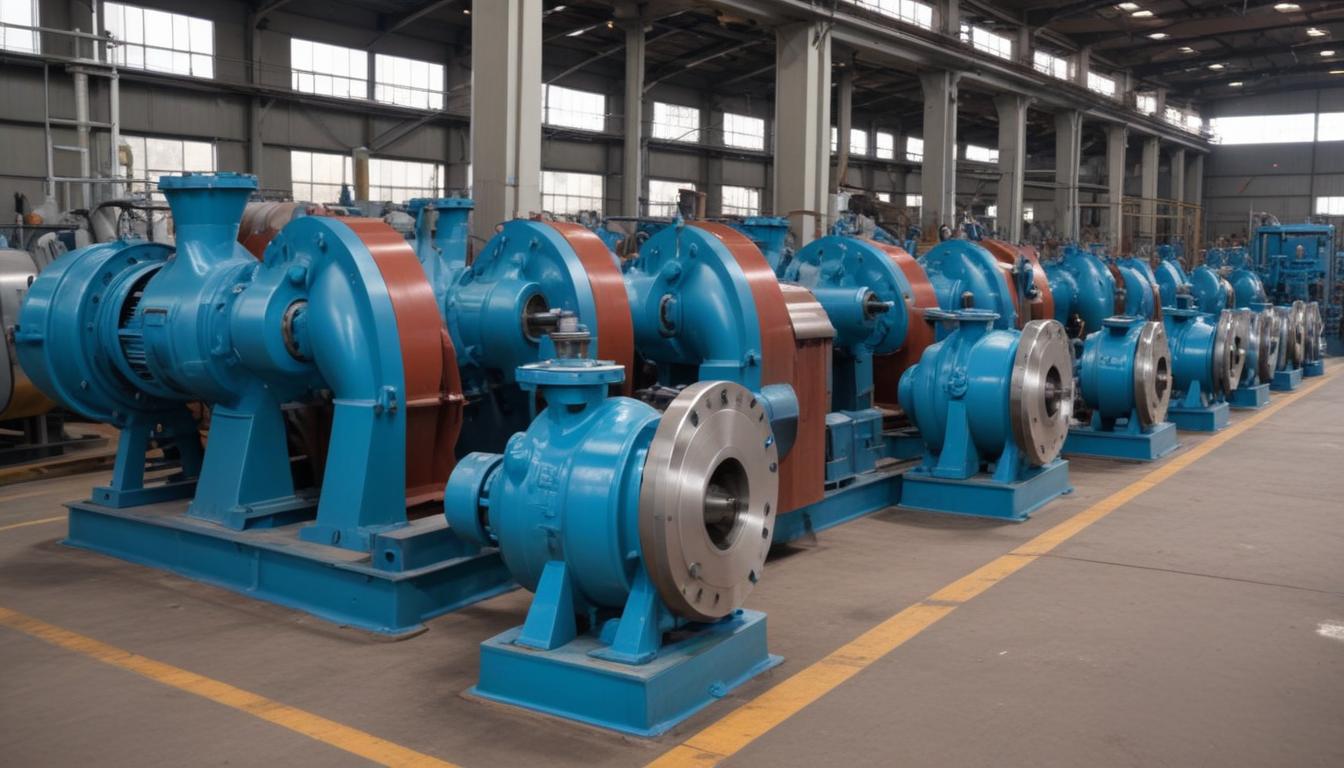 Enhancing energy efficiency in pump operations is crucial for reducing operational costs and minimizing the environmental impact of paper manufacturing processes. Implementing effective energy-saving strategies can lead to significant improvements in overall system performance. Key approaches include:
Enhancing energy efficiency in pump operations is crucial for reducing operational costs and minimizing the environmental impact of paper manufacturing processes. Implementing effective energy-saving strategies can lead to significant improvements in overall system performance. Key approaches include:
- Variable Frequency Drives (VFDs): Installing VFDs on motors allows for the adjustment of pump speed to match the demand, reducing energy consumption during periods of lower flow requirements. VFDs enhance control over pump operations, leading to optimized energy usage and extended equipment life.
- Pump System Optimization: Analyzing the entire pump system to identify and eliminate inefficiencies is essential. This includes ensuring that pumps operate near their Best Efficiency Point (BEP), minimizing friction losses in piping, and choosing the appropriate pump type for specific applications.
- Regular Maintenance: Maintaining pumps in optimal condition through routine inspections, lubrication, and timely replacement of worn components prevents energy losses caused by mechanical inefficiencies such as leaks, wear, and misalignment.
- Advanced Control Systems: Utilizing smart control systems that monitor and adjust pump operations in real-time can lead to more precise energy use. These systems can automatically respond to changes in process requirements, ensuring that pumps operate efficiently under varying conditions.
- Energy-Efficient Pump Selection: Selecting pump types that are inherently more energy-efficient for specific applications, such as modern centrifugal or screw pumps, can lead to substantial energy savings over time. Evaluating the total cost of ownership, including energy consumption, is crucial during the selection process.
- Heat Recovery Systems: Implementing heat recovery from pump motors and other components can reclaim wasted energy, which can be repurposed for heating processes within the plant, thereby enhancing overall energy efficiency.
- Leak Detection and Repair: Ensuring that all connections and seals are intact and free from leaks prevents loss of pressure and flow, which directly contributes to unnecessary energy expenditure.
A structured approach to energy efficiency can be summarized in the following table, highlighting the strategy, implementation actions, and expected benefits:
| Strategy | Implementation Actions | Expected Benefits |
|---|---|---|
| Variable Frequency Drives (VFDs) | Install VFDs on motor-driven pumps to adjust speed based on demand. | Reduces energy consumption, improves process control, extends pump life. |
| Pump System Optimization | Conduct flow and pressure assessments to ensure pumps operate near BEP. | Maximizes efficiency, lowers energy usage, reduces wear and tear. |
| Regular Maintenance | Implement a preventive maintenance schedule for inspections and servicing. | Prevents energy losses, maintains optimal performance, extends equipment lifespan. |
| Advanced Control Systems | Deploy smart monitoring and control technologies for real-time adjustments. | Enhances precision in operations, optimizes energy use, adapts to changing conditions. |
| Energy-Efficient Pump Selection | Select pumps based on energy efficiency ratings and application suitability. | Achieves long-term energy savings, reduces operational costs. |
| Heat Recovery Systems | Integrate systems to capture and reuse waste heat from pump motors. | Improves overall energy utilization, lowers heating costs. |
| Leak Detection and Repair | Regularly inspect and repair pump seals and connections to prevent leaks. | Maintains system pressure, prevents unnecessary energy expenditure. |
Implementing these energy efficiency strategies not only contributes to cost savings but also supports sustainability goals within paper manufacturing facilities. By focusing on the efficient operation of paper manufacturing pumps and optimizing overall system performance, manufacturers can achieve significant reductions in energy consumption while maintaining high levels of production quality and reliability.
Future trends in pump technology
Advancements in pump technology are poised to significantly transform paper manufacturing processes in the coming years. Innovations driven by the need for greater efficiency, sustainability, and automation are shaping the future landscape of paper manufacturing pumps. Key trends and emerging technologies include:
- Smart and Connected Pumps: Integration of Internet of Things (IoT) technology allows pumps to communicate real-time data regarding their performance and condition. This connectivity facilitates predictive maintenance, reduces downtime, and enhances overall system reliability.
- Advanced Materials: The development of new materials, such as corrosion-resistant alloys and composite materials, improves pump durability and extends service life, especially in handling abrasive or chemically aggressive fluids common in paper manufacturing.
- Energy Optimization Technologies: Beyond Variable Frequency Drives (VFDs), emerging technologies such as magnetically levitated (maglev) pumps reduce friction and energy losses, further enhancing energy efficiency.
- Additive Manufacturing: 3D printing enables the production of complex pump components with intricate geometries that enhance fluid dynamics, reduce material usage, and allow for rapid prototyping and customization.
- Enhanced Control Systems: Incorporation of artificial intelligence (AI) and machine learning algorithms in pump control systems enables more precise regulation of flow and pressure, adapting dynamically to process changes and optimizing performance.
- Modular Pump Designs: Future pump models are increasingly adopting modular designs, allowing for easier scalability, maintenance, and customization to meet specific application requirements in paper manufacturing.
- Sustainable and Eco-Friendly Designs: Emphasis on reducing the environmental impact of pumps leads to the development of designs that minimize waste, utilize eco-friendly materials, and incorporate energy recovery systems.
A closer look at some of these trends showcases their potential impact:
| Future Trend | Description | Potential Benefits |
|---|---|---|
| IoT Integration | Embedding sensors and connectivity in pumps to monitor performance and enable remote diagnostics. | Enhanced predictive maintenance, reduced downtime, improved operational efficiency. |
| Magnetic Levitation | Utilizing magnetic fields to levitate the pump shaft, eliminating physical contact and reducing friction. | Lower energy consumption, reduced wear and tear, increased pump lifespan. |
| 3D Printing | Employing additive manufacturing to create complex pump components tailored to specific applications. | Faster production cycles, cost-effective customization, improved fluid dynamics. |
| AI-Driven Controls | Implementing machine learning algorithms to optimize pump operations based on real-time data. | Increased precision in flow and pressure control, adaptive performance, enhanced system optimization. |
| Modular Designs | Designing pumps with interchangeable modules for easy upgrades and maintenance. | Flexibility in operation, simplified maintenance, scalability for different processing needs. |
| Eco-Friendly Materials | Using sustainable and recyclable materials in pump manufacturing. | Reduced environmental footprint, compliance with green manufacturing standards. |
Implications for Paper Manufacturers:
The integration of these emerging technologies into paper manufacturing pumps offers several significant advantages:
- Operational Efficiency: Smart pumps with IoT capabilities can optimize performance in real-time, ensuring that pumps operate at their most efficient levels and reducing energy consumption.
- Cost Savings: Enhanced durability and energy-efficient technologies lower maintenance and operational costs, while predictive maintenance minimizes unexpected downtime.
- Environmental Sustainability: Eco-friendly pump designs and energy optimization contribute to the reduction of the environmental impact associated with paper manufacturing.
- Customization and Flexibility: Modular and additive manufacturing approaches allow for pumps to be tailored to specific process requirements, enhancing flexibility in production.
- Data-Driven Decision Making: Advanced control systems and real-time monitoring provide valuable data insights, enabling informed decision-making and continuous process improvements.
As the paper manufacturing industry continues to evolve, staying abreast of these technological advancements is crucial. Adopting future-oriented pump technologies not only enhances operational performance but also aligns with broader goals of sustainability and innovation.

